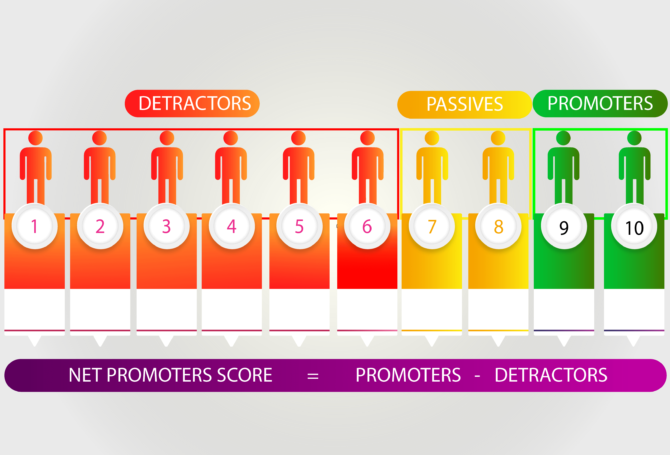
Most of us value our reputations. Few of us actually measure them. We should to keep organizations on their toes, sharpen the products or services they offer and motivate managers and employees. Putting a smile on the face of customers and clients is good, too. And a good reputation is worth preserving in a crisis.
One of the most fundamental measurements of reputation is whether performance matches promotion. Do you deliver on what you promise? Do your customers and clients sing your praises or think you’re overrated? Do you have more happy campers than detractors?
Measuring your reputation can have the same appeal as going to your dentist. As with good dental care, reputational check-ups can be healthy and prevent serious problems.
The most basic measurement tool is a survey conducted by a third party to encourage candor. Questions can include:
- How would you rate your experience with Organization X?
- Were you delighted or disappointed? Why?
- Was the product or service you received exceptional or just okay?
- What would have made the experience better?
- Would you recommend this firm? If so, why? If not, why?
Sometimes, the number of “promoters” versus “detractors” in a survey is rendered as a net promoter score. A positive number (more promoters than detractors) is good. What’s better is finding out why your customer/client was delighted or disappointed. What delights should inform your branding, marketing and personnel training. What disappoints should be topic #1 in staff meetings to discuss how to improve.
Another beneficial technique is fanning out to talk one-on-one with customers or clients. These can be awkward conversations unless set up properly. You have to give your customer/client permission to tell you the truth to your face. And you have to be graceful enough to accept what you hear without disagreeing or making excuses. Such conversations can be enormously rewarding, both in terms of the insights they yield and the rapport they engender with a customer or client.
To avoid uncomfortable situations, interviewers shouldn’t interview their own clients or customers when you know there has been friction or complaints. A colleague or business partner can serve effectively as a third party to gather feedback – and as a firm representative to soothe ruffled feathers and win back customer or client trust.
Media audits can provide useful perspective on a reputation. A media audit can involve a thorough review of media coverage (or non-coverage). It also can include interviews with appropriate beat and investigative reporters and editorial board members.
Don’t forget to review your ‘complaint box’, whether in the form of online reviews or direct correspondence.
Gathering information about your reputation is a critical, but only preliminary part of measuring your reputation. Armed with the views of customers, clients, journalists and critics, your firm leadership needs to engage in introspection. Run the findings from a survey, interviews and media audit by your staff to get their reaction. Ask your own employees to rank the firm’s performance against its promises.
The final step is to move from introspection to action. Attack the most consequential complaints and disappointments. Treat the changes you make in response to complaints as a learning opportunity, not as a ‘finding fault’ exercise. Make ‘getting better’ a group goal. Identify tangible ways to mark improvement. Seize on ways that simultaneously increase customer/client satisfaction and staff satisfaction.
Be open about your reputation and the steps you are taking to fortify it. Use your blogs, website and social media to tell your own story of listening and learning and getting better. For the customers or clients who offered constructive advice, why not send them a handwritten thank you note, which would reflect your appreciation and how much you value your firm’s reputation.
If your organization faces a crisis, you will have a reputation worth preserving – and a roadmap to guide how to respond the crisis.

Gary Conkling is principal and co-founder of CFM Strategic Communications, and he leads the firm’s PR practice, specializing in crisis communications. He is a former journalist, who later worked on Capitol Hill and represented a major Oregon company. But most importantly, he’s a die-hard Ducks fan. You can reach Gary at garyc@cfmpdx.com and you can follow him on Twitter at @GaryConkling.



